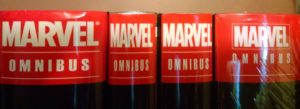
Each year, a mysterious and intrepid comic book fan known only as Tigereyes reaches out to some of the biggest collected editions communities on the web to ask them a single question: What are the top 10 Marvel Omnibuses you’d most like to buy?
Thus, the Most-Wanted Marvel Omnibus Secret Ballot was born.
While we only get to see the top 50 or so results of the survey each year, based on the number of voters it’s entirely possible that there are over ten times that many omnibuses nominated by voters. The long tail of the survey would make not only for interesting analysis, but terrific rainy-day reading.
To help inspire that long tail as well as your own rainy day reads, I’m covering dozens of Marvel runs that would make for terrific omnibuses. For the past four days I highlighted every potential missing X-Men omnibus from 1963 to 2015. Now, I’m going to stroll backwards through time to look at the rest of Marvel, starting with their newest comic runs released from 2012 to present.
The fact that these books aren’t currently omnibuses (and may never be) doesn’t have to stop you from sampling them – even if you’ve never read a comic before in your life! Each one is a terrific self-contained comic experience that can be enjoyed without any crossovers or companion series.
You can either pick up existing collections as outlined by Crushing Comics’s Guide to Collecting Marvel Comic Books, or just sign up for Marvel Unlimited, a Netflix-for-comics where 100% of the issues from today’s post are available to read on any device.
With so many Marvel Now series clocking in at under 20 issues, and many being just 12, there are a lot of deserving series that just can’t quite fill out an omnibus volume! Others only make it to the finish line by including the continuations of their series from post-Secret Wars All-New All-Different Marvel.
This list doesn’t include any X-Men titles, nor Hickman’s Avengers and Avengers World, the former of which is in the process of being collected (and the latter of which deserves to be a companion piece, in some regard). Also, I didn’t include runs that continued to All-New All-Different and are still going with the same creators, which is mostly just Amazing Spider-Man, Spider-Gwen, Squirrel Guide, and Silver Surfer.
And, here’s my standard collections mapping disclaimer: This can likely all be improved, and some of it is subjective! That’s part of the fun, for me. You might have corrections, improvements, or things you’d like to leave out. Honestly, I don’t even agree with how Marvel does things a lot of the time. If you have a correction or disagreement don’t by shy – I’d love to hear them in the comments, below.
![]()
Ant-Man (2015) & Astonishing Ant-Man (2015)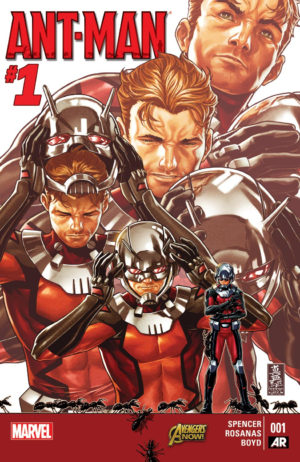
Ant-Man by Nick Spencer (20 projected issues)
Collects Ant-Man (2015) #1-5 & Annual 1, Ant-Man: Last Days (2015) #1, and The Astonishing Ant-Man (2015) #1-13.
What is it? Ant-Man wants to be more than the heroic version of a small-time crook, but he might wind up a small-time crook in the process.
Scott Lang hasn’t had too many definitive stories as Ant-Man, which makes this amusing series by Nick Spencer a perfect companion to the Ant-Man and Wasp movie we’re supposedly getting in 2018.
If you enjoyed Spencer’s Superior Foes of Spider-Man, this book is in a similar vein. Scott Lang needs money, but he also wants legitimacy as Ant-Man – not only to feel better about his heroing, but to prove himself to his wife and daughter Cass (who was a pretty awesome hero herself, as Stature).
Of course, nothing is that simple. Lang winds up on the wrong side of the law as much as the right, no matter how well-intentioned his efforts.
And, if it seems like you’re getting rewarded more for crime, why not let it pay?
![]()
Avengers Arena (2013) & Avengers Undercover (2014)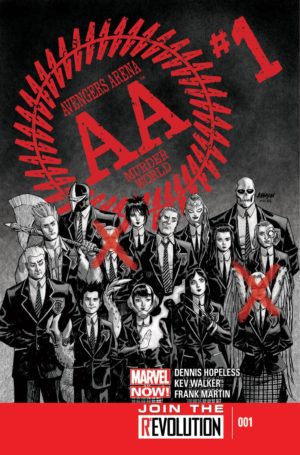
Avengers Arena by Dennis Hopeless (28 projected issues)
Collects Avengers Arena (2013) #1-18 and Avengers Undercover (2014) #1-10.
What is it? Marvel’s B-list (and lower) teens face off in a Battle Royale send-up that’s more Catching Fire than Hunger Games.
Read it now: Guide to Young Avengers
Dennis Hopeless drew endless amounts of fan ire when the concept of this book debuted – taking a slew of fan favorite Avengers Academy and Runaways characters – plus X-23 – and saying only one would survive.
What we got was a lot more nuanced than that – as if Hunger Games had more than just one point-of-view character in Katniss. Really, it’s more like Catching Fire, as we get more factions and more attempts of our protagonists to thwart the game itself rather than just kill each other.
The most surprising part was that it wasn’t just characters we already knew who were the most compelling. Many of Hopeless’s creations wound up being as interesting as the oldest characters in the cast. Some of that crew carries over to Undercover, which finds the young heroes succumbing to the media’s narrative that they’ll surely go bad as the result of their experiences – but doing it to get closer to their former captor Arcade.
![]()
Mighty Avengers (2013) & Captain America & The Mighty Avengers (2014)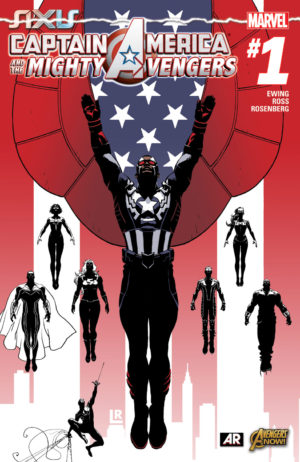
Avengers by Al Ewing (31 projected issues)
Avengers Assemble (2012) #14-15.AU, Mighty Avengers (2013) #1-14, Captain America & the Mighty Avengers (2014) #1-9, Avengers (2013) #34.1, Captain Britain & the Mighty Defenders (2015) #1-2 and Ultron Forever in Avengers: Ultron Forever (2015) #1, New Avengers: Ultron Forever (2015) #1, and Uncanny Avengers: Ultron Forever (2015) #1
What is it? Marvel’s best extended run of Avengers comics in Marvel Now didn’t have the names Bendis, Hickman, or Spencer on it.
Read it now: Guide to Mighty Avengers
Al Ewing didn’t write a single bad issue in Marvel Now, from his grim alternate reality take on the destruction of Age of Ultron to his snappy team of fringe characters recast as dysfunctional business partners in two volumes of Mighty Avengers.
It turns out Ewing is the master of taking the momentum of a line-wide event and rolling with it. That’s how he got his Marvel break, writing a pair of Age of Ultron tie-in issues for Avengers Assemble. It was also how his Might Avengers launched – in the midst of Hickman’s space conflict, Infinity.
I’ve re-read the arc multiple times and I still can’t tell you how Ewing managed to tie in characters like Luke Cage, Jessica Jones, Spider-Man, Spectrum (AKA Monica Rambeau), She-Hulk, and Blade into Infinity. Afterward, he keeps building, bringing in minor players like the new White Tiger and new Power Man alongside obscure sideline character Blue Marvel, building out a broad continuity for each of them that will make you believe they’ve got dozens of issues of back story that don’t even exist. Later, he adopts Sam Wilson as a central figure on the team, all while writing Luke Cage and Jessica Jones as the nucleus of this team as family.
The results are delightful.
![]()
Black Widow (2014 & 2016)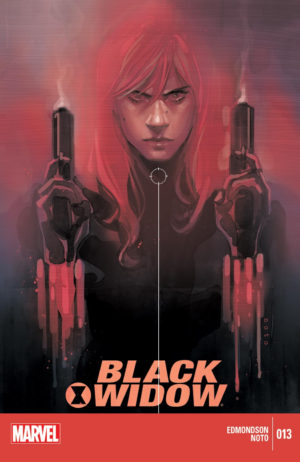
Black Widow by Edmonson & Noto (+Waid & Samnee?) (22 or 34 projected issues)
An Edmonson-only volume would collect Black Widow (2014) #1-20, Punisher (2014) #9, material from All-New Marvel Now! Point One (2014) #1. Marvel could easily jump right to omnibus with the critically acclaimed Black Widow (2016) #1-12 by Waid & Samnee, killing two birds with one stone.
What is it? Black Widow finally maintains two ongoing series for longer than a handful of issues, both with remarkable artwork and one with critical acclaim.
Read it now: Guide to Black Widow
I’ve got mixed feelings on Edmonson’s take on Black Widow.
On one hand, it finally gives her a long-running solo plot, and every issue is suitable for gallery hanging thanks to Phil Noto’s essential take on Natasha.
On the other hand, it doesn’t often feel like Widow has agency in her own story, and Edmonson seems fascinated with writing her as constantly fallible. All heroes need a flaw, but it feels like Widow is all flaws and very little else and it can be frustrating.
While Marvel would likely issue those 20 issues on their own as a fat OHC or a slim omnibus, they could easily gang them up with the All-New All-Different Mark Waid and Chris Samnee run on Black Widow. Hot off their indelible and cheerful run on Daredevil, this time around Samnee takes the reigns of plotting with Waid simply assisting on script. I haven’t read it yet, but fans and reviewers alike lauded it month-in and month-out as a perfect Natasha tale.
At this point, Waid and Samnee’s names are surer sellers on a big book than Edmonson’s (and we haven’t seen Noto on big books enough to know). Pairing these runs would be great for its legs.
![]()
Captain America (2013) & All-New Captain America (2014)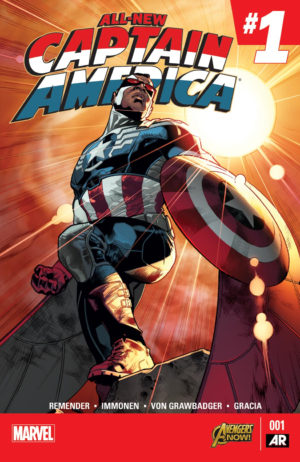
Captain America by Rick Remender (40 projected issues)
Collects Captain America (2013) #1-25, All-New Captain America (2014) #1-6, All-New Captain America: Fear Him (2015) #1-4, and Winter Soldier: The Bitter March #1-5
What is it? Rick Remender takes three years of writing Captain America and stretches it out over decades of story time, making some controversial changes along the way.
Read it now: Guide to Captain America
I enjoy this run more in retrospect than I did the first time through, which says a lot about the need to consider comics stories as a whole (which isn’t necessarily a good, progressive thing).
When it was first happening, the lugubrious, decade-long interdimensional hijinks in the first year of the book not only wore me down, but they seemed like a terrible fit for Captain America. It felt like Remender was forcing a stale Cable plot onto Steve Rogers.
With hindsight, I understand that every issue in this series was about Remender’s plan to retire Steve Rogers while building Sam Wilson’s path to taking on his mantle. By building a family for Captain America and then wrenching it away, Remender gained access to plot beats no Cap writer had before him. He also used the opportunity to flesh out Cap’s supporting cast, now that characters like Mariah Hill and Winter Soldier belong to the rest of the Marvel Universe.
I think he still got more wrong about Cap than right, but as Sam Wilson’s arc emerged the book became increasingly more solid, until it was on fire with Wilson as the lead. Considering that gradual build over three years of story, I think the run could really benefit from a recollection so fans could digest it all in one go.
![]()
Captain Marvel (2012 & 2014)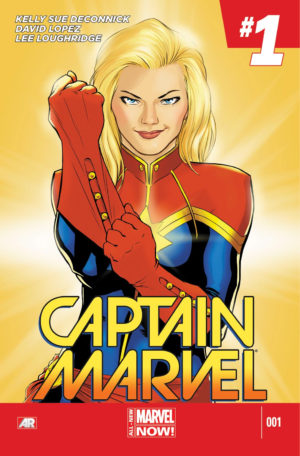
Captain Marvel by Kelly Sue DeConnick (45 projected issues)
Collects Captain Marvel (2012) #1-17, Captain Marvel (2014) #1-15, Captain Marvel and The Carol Corps (2015) #1-4, Avengers: The Enemy Within #1, Avengers Assemble #9-11 & 16-17, and non-KSD scripted key guest appearances from Avenging Spider-Man #9-10 and A+X #6.
What is it? This definitive Carol Danvers run feels like a bunch of small stories when consumed one-by-one, but the whole is greater than the sum of its parts.
Read it now: Guide to Ms. and Captain Marvel
Marvel made a bold, intuitive move just prior to Marvel Now in transforming Carol Danvers from “Ms.” to “Captain” and pairing her with her first female writer, Kelly Sue DeConnick.
The result was pure comics magic.
Carol lost none of her feminist bent without the “Ms.” moniker, but her “Captain” title made more obvious the weight of her accumulated experience and narrative – as did a stellar flight-suit redesign to replace her old one-piece bathing suit look.
DeConnick found a way to ground each story in relationships no matter how climactic or galactic they became. I often found myself in the middle of an arc thinking, “Does this story really need to be told,” only to be satisfied at the end as I realized the tale addressed an aspect of Captain Marvel’s history while advancing her character. That was the magic of this book. It wasn’t about massive space blowouts and “nothing will be the same” stories. It was about people.
Despite a brief blah period of art in the middle of this run, it is a satisfying read from start to finish full of fun, imaginative stories that deserves its own massive hunk of book on your bookshelf – which would be the first female-lead Marvel solo title to garner an omnibus.
![]()
Indestructible Hulk (2013) & Hulk (2014)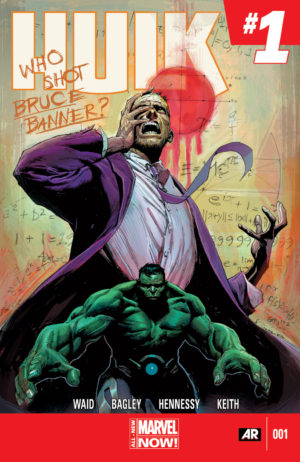
Hulk by Mark Waid & Gerry Duggan (41 projected issues)
Indestructible Hulk (2013) #1-20 & Annual 1, Original Sin: Hulk vs. Iron Man #1-4, and Hulk (2014) #1-16
What is it? An under-valued run that spans the gamut of Hulk – from super-scientist Banner, to Hulk as a living weapon, to a villainous super-genius super-brute pairing of the two.
Read it now: Guide to Hulk
I still can’t figure out why this clever Hulk run from Mark Waid wasn’t a massive hit. It created a new status quo for Hulk as SHIELD’s very own Gamma Bomb, but one that Bruce Banner could circumvent with applied super-science. That made Banner a more relevant force in his own story, and kept the Hulk battles clever.
However, Waid seemed fatigued by the run, and he made a hasty exit at the top of a new volume after Original Sins after introducing a gun shot that lobotomized Bruce Banner. Enter Gerry Duggan, with the terrific twist of this Hulk being on his way to become Maestro – and his first step would be eliminating every other Gamma-powered hero out there.
Hulk versus his entire Gamma-powered supporting cast (plus a resistant Banner within) turned out to be must-read comics, bringing a real 80s sense of pulpy joy back to Hulk.
![]()
Inhuman (2014) & Uncanny Inhumans (2015) (& All-New Inhumans (2016)?)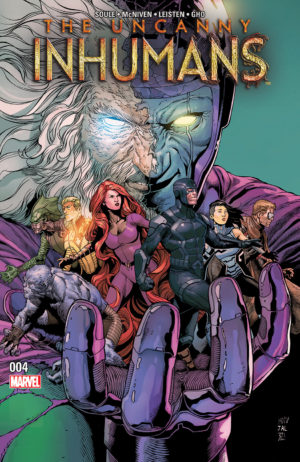
Inhumans by Charles Soule (42 to 53 projected issues)
Collects Inhuman (2014) #1-14 & Annual 1, Inhumans: Attilan Rising (2015) #1-5, Free Comic Book Day 2015 (Avengers) (2015), The Uncanny Inhumans (2015) #0-20 (could also optionally include All-New Inhumans #1-11, since Soule co-wrote the opening arc or IvX #1-6, which he co-wrote with Lemire)
What is it? Charles Soule invents a whole new line of Marvel comics that is always moving forward, never relying on Inhumans nostalgia to drive it.
Read it now: Guide to Inhumans
Marvel’s big revitalization of the Inhumans franchise almost had a complete failure to launch when original author Matt Fraction picked the months ahead of its launch to walk out on Marvel. Into the breach stepped super-hot Charles Soule, who had to rescript the opening issues of Fraction’s series and then write his way into a new expanded plot for the Inhumans.
What we got wasn’t exactly the Game of Thrones epic Fraction promised, but Soule used the creation of scores of new Inhumans to broaden the storytelling canvas far beyond the royal family that was usually so synonymous with Inhumans titles. With that came more rivalries and romances
![]()
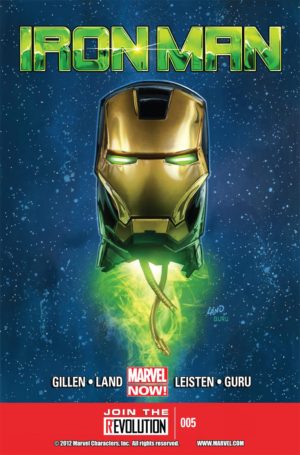 Iron Man (2012) & Superior Iron Man (2014)
Iron Man (2012) & Superior Iron Man (2014)
Iron Man by Kieron Gillen & Tom Taylor (53 projected issues)
Collects Iron Man (2012) #1-27 and Annual 1, Iron Man: Fatal Frontier (2013) #1-12, Original Sin #3.1-3.4: Hulk vs. Iron Man, and Superior Iron Man #1-9.)
What is it? Kieron Gillen writes the best likable villains and unlikeable heroes, and Tony Stark is both in this run that sees him briefly abandoning the wreckage of his earthbound relationships before later returning to solve everything.
Read it now: Guide to Iron Man
Gillen’s Iron Man is another Marvel Now run that was better than anyone gave it credit for at the time. After Matt Fraction exhaustively deconstructed Tony Stark’s personality both figuratively and literally, Gillen took a different tact. After confronting Tony with his myriad failures in a series of one-shot stories at the top of the volume, he launched him into an extended solo trip into space.
While I’m usually against that sort of left-turn for a character, here it was perfect. Tony Stark had none of his usual cast to snark against, nor all of his riches as resources. As a result, we got to see a scrappy, self-made Stark without a lot of hand-waving about why no one else could assist him. That played perfectly against a flashback tale that called Tony’s parentage into question. Playing that continuity-altering story against the solo Stark in space was a perfect contrast – it made both stories work better.
Unfortunately, Gillen didn’t quite know what to do with Tony back on Earth with his new status quo. He departed the book after Original Sin, with Tom Taylor taking over an Axis-shifted Tony who hardly seemed different than the heroic version. It was another interesting study in contrasts. Is a villainous Tony really so different than a heroic one? What lines would he suddenly cross to cause friends like Matt Murdock and Pepper Potts to suddenly turn on him?
Altogether it’s a fun modern run on Iron Man that looks great for its duration. It would make a fine omnibus, especially to tie in with an Avengers film that finds Tony fighting Thanos in space.
![]()
Loki: Agent of Asgard (2014)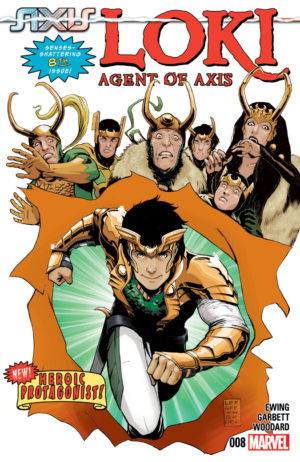
Loki: Agent of Asgard (22 to 28 projected issues)
Collects Loki: Agent of Asgard (2014) #1-17, Original Sin (2014) #5.1-5 (Thor & Loki: The Tenth Realm), and perhaps Angela: Asgard’s Assassin (2015) #1-6, in which he co-stars.
What is it? Loki is (somewhat) grown up again and (not actually) still a good guy as he tries to toe the line between being a normal 20-something on Earth and Asgard’s fixer.
This Al Ewing series picks up Loki from the end of Young Avengers – still no longer the good guy he was in Journey Into Mystery, and now doubled in age from tween to suave young adult.
He’s also trying to be a lot more of a low-key Loki than he was before, but with Asgard’s All-Mother sending him on secret missions, him still trying to balance the scales of his own chaos, and also trying to charm a super-smart new next-door neighbor, things get quickly and predictable out of hand.
This series was a total joy to read, as were just about all of Loki’s appearances after Young Avengers in Marvel Now – and they could all be collected here, as he’s definitely acting in his Agent of Asgard capacity in both the Original Sins mini and Angela’s brief ongoing.
![]()
Moon Knight (2014 & 2016)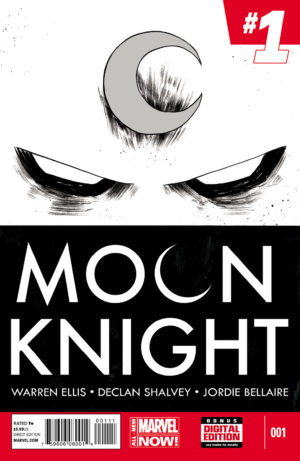
Moon Knight by Ellis, Wood, Bunn, & Lemire (31 projected issues)
Collects Moon Knight (2014) #1-17 and Moon Knight (2016) #1-14
What is it? Moon Knight dances at the intersection of sanity and horror in a pair of blockbuster runs but some of comics’ hottest creators.
Read it now: Guide to Moon Knight
Warren Ellis on an oddball character like Moon Knight is appointment comics.
Ellis didn’t disappoint, with a left-turn take on Moon Knight as a sort of one-man Ghostbuster drawn to investigating paranormal events in New York.
While his Ghostbuster status didn’t necessary hold for the authors that followed, they followed Ellis’s lead in injecting new ideas and shorter tales into what became one of Marvel’s most consistently-acclaimed sleeper hits.
![]()
Nova (2013 (& 2016?)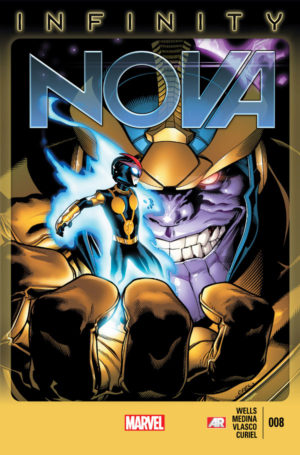
Nova: Sam Alexander (34 to 45 projected issues)
Collects Nova (2013) #1-31, Annual 1, and Special, Iron Man (2013) Special, Uncanny X-Men (2013) Special (and maybe Nova (2016) #1-11)
What is it? An all-new Nova takes over the helmet from his absentee father and finds the joys in adolescent superheroics in the same way as Ms. Marvel, but with way more punching.
Read it now: Guide to Nova
Nova was the first in Marvel’s sometimes-lauded, sometimes-lamented crew of new legacy heroes emerging since 2012. Sam Alexander drew an amount of fan ire from long-time Richard Rider fans, but they aren’t that big of a club and as a white male character he wound up embraced a lot more quickly than Lady Thor or Sam as Cap despite his story not being as strong.
While this might not have been best-comics-ever, it was a fun take on the adolescent-as-hero that tried a lot of different things while maintaining a solid through-line of Sam’s belief that his Nova Corps serving dad was still alive. It also scored consistently solid artwork, that always maintained Sam’s wiry adolescent frame and a feeling of glossy pulp adventure to the space-faring bits of the book.
![]()
Punisher (2014)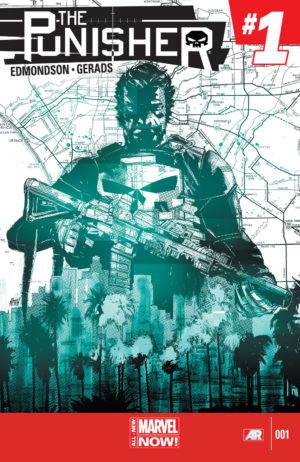
Punisher by Edmondson & Gerads
Collects Punisher (2014) #1-9, Black Widow (2014) #9, Punisher (2014) #10-20, and an excerpt from Secret Wars (2015) #1
What is it? A downbeat, somber run on Punisher that still manages to dabble in the super-heroic.
Read it now: Guide to Punisher
After a decade of consistently running series, Punisher’s only appearance in early Marvel Now was in Thunderbolts. With street-level crime taking a turn for the comedic in series like Superior Foe and Hawkeye, it was hard to picture how the typical grim Punisher would fit in to the new world of Marvel – especially after a masterful run by Greg Rucka.
Nathan Edmondson found the perfect balance for Punisher’s return. First, he uproots him from his family home in New York. Then, he begins by pitting him against a super-villain rather than just a mob. And, finally, instead of playing out Punisher’s typical ethical conundrums as a street-level vigilante, he casts them against a larger scope in LA, pulling in AIM and the Howling Commandos.
While it doesn’t feel at all like classic Punisher, the run still feels right. It’s a sorely needed breath of fresh air on the character without doing anything as zany as, say, turning him into an avenging angel.
![]()
Secret Avengers (2013 & 2014)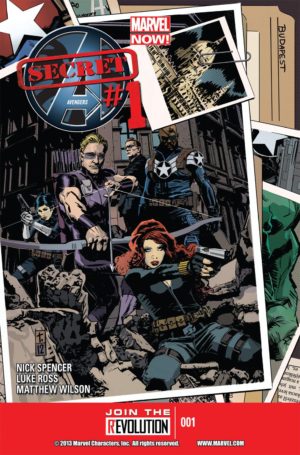
Avengers – Agents of S.H.I.E.L.D. (34 projected issues)
Collects Secret Avengers, Vol. 2 (2013) #1-16 and Vol. 3 (2014) #1-15, plus Original Sin: Secret Avengers Infinite Comic #1-2 and material from Marvel Now! Point One.
What is it? Your favorite supporting Avengers are working for SHIELD to save the world, but not all of them realize it.
Read it now: Guide to Secret Avengers
This pair of Secret Avengers runs by Nick Spencer and Ales Kot are crackling good comics.
Both volumes take the perspective of various Avengers working in the employ of SHIELD – sometimes against their wills. With an intentionally movie-friendly cast that includes Black Widow, Hawkeye (and, later, Deadpool) and an entirely self-contained story, this book would be an incredibly satisfying read as one big collections.
While Spencer’s half is slightly grim in tone as SHIELD tries to undermine AIM by sending Mockingbird deep undercover, Ales’s Kot is an elaborate farce that involves M.O.D.O.K. professing his love for Maria Hill an Agent Coulson.
![]()
Silk (2015 & 2016)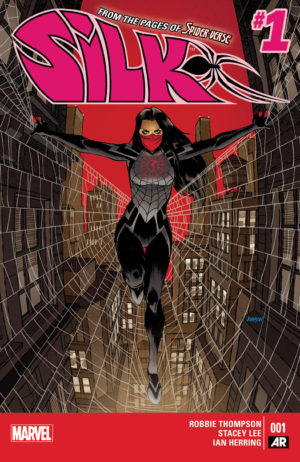
Silk – The Spider-Woman by Robbie Thompson (33 to 37 projected issues)
Collects Silk (2015) #1-7, Silk (2016) #1-19, The Amazing Spider-Man & Silk: The Spider(fly) Effect #1, Spider-Gwen [II] (2015) #7-8, Spider-Woman (2016) #6-7, Spider-Women Alpha (2016) #1, and Spider-Women Omega (2016) #1.
What is it? This might secretly be Marvel’s best young-adult oriented title, starring a second victim of that radioactive spider who is every bit as charming as Peter Parker.
Read it now: Guide to Spider-Women
Robbie Thompson turns a would-be “What if?” concept and a character that could been a one-arc-and-done series and turned it into two years of one of the most charming reads in the Marvel universe.
That “What if?” is this – what if the infamous radioactive spider that gave us Spider-Man also nibbled on another victim? The character is Cindy Moon, gifted with similar powers to Parker’s but burdened with a different responsibility – to spend an entire decade locked in a bunker to protect the universe from an insane spider-hunter.
Silk #1 finds Cindy emerging from the bunker into a world of smart-phones and super-villains that she hardly understands, completely alone save for a strange, pheromone-driven connection with Peter Parker. That gives Thompson plenty of material to craft the journey of a new hero in a way that’s similar to Ms. Marvel, but centered on much more super action in the foreground with a family story in the background.
The result is every bit as good as Ms. Marvel, with a bit more flashy heroism to attract younger readers.
![]()
Spider-Man 2099 (2014 & 2015)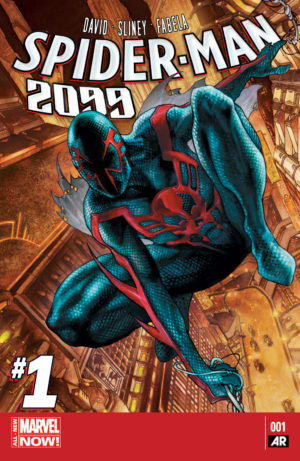
Spider-Man 2099 by Peter David and Will Sliney (37 projected issues)
Collects Spider-Man 2099 (2014) #1-12 and Spider-Man 2099 (2015) #1-25
What is it? The Spider-Man of the future is splitting his time in the present in a series that feels like the perfect extension of his 90s book – maybe because it’s written by the same author.
Marvel launched a line of 2099 comics in the 90s, imagining the Marvel Universe a hundred years later. A few of them were particularly long-running, but for a while it seemed that Doom 2099’s pedigree of writer Warren Ellis made it the most memorable of the books.
However, that’s before taking Peter David into account. There’s something about this longtime comics writer and novelist that inspires fan dedication to characters like no other, and he created this Spider-Man and wrote all but two of his original issues. And, when Dan Slott brought the character back in an awesome arc of Superior Spider-Man, it was David who launched him into a new ongoing series that has surprised all onlookers to stretch into close to 40 issues across a pair of runs.
Not only that, but so far all but one issue of this sometimes more than monthly comic has been drawn by Will Sliney! That’s completely unheard of in this day and age by any artist who isn’t Salvador Larroca.
While #25 isn’t yet confirmed to definitely end this run of this series, the solicit contains the phrase “Miguel’s fight for the fate of the future comes to a climactic end” and there’s much speculation to David will be turning his spider-senses to the new Ben Reilly title.
![]()
Superior Spider-Man (2013) (& Superior Spider-Man Team-Up (2013)?)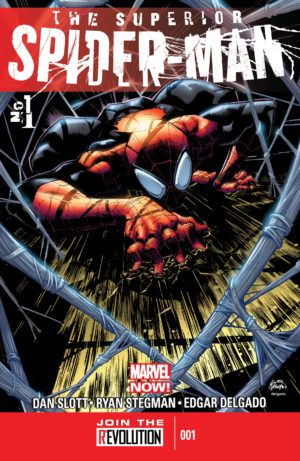
The Superior Spider-Man by Slott & Gage (& Yost & Shinick?) (36 to 58 projected issues)
Collects Amazing Spider-Man #698-700, Superior Spider-Man #1-32 & Annual 1-2 (plus, if Marvel felt adventurous, maybe Avenging Spider-Man #15.1 & 16-22 and Superior Spider-Man Team-Up (2013) #1-12 & Special, All-New X-Men (2013) Special, and Indestructible Hulk (2013) Special)
What is it? Spider-Man goes bad for a totally zany reason and you won’t be sure if you’re rooting for him to get worse or better.
Read it now: Guide to Spider-man
I’ve always enjoyed Spider-Man but have never been a regular, ever-issue Spider-Man reader, so hear me when I say: this run not only made me a regular Spider-Man reader, it put Spider-Man at the top of my to-read pile.
Superior Spider-Man sees Peter Parker as a villain but… not? Dan Slott found a relatively un-mined story beat in contrasting the world-domination aspirations of most super-villains, who manage to find the motivation and funding to build dangerous empires again and again, with the meagre adventure-to-adventure existence of most Marvel heroes. What would a villain do with all of Spider-Man’s power and responsibility?
The answer is: be superior, and the stories behind it are the comics equivalent of a popcorn movie, full of over-the-top action, romance, and revenge that will keep you turning pages.
That’s only enhanced by the Team-Up run from Christopher Yost and Kevin Shinick. Yost is perhaps the best Spider-writer alive after Gerry Conway, but Marvel deploys him selectively on mini-series and one-shots will Slott continues to script the main title. That makes this 16-issue run a gold-mine, which also happens to emphasize the more villainous side of the Superior Spider-Man.
Realistically, Marvel almost never combines related runs into omnibus like this, but the Avenging/Team-Up material would never sell out an OHC all on its own and without it you’re only getting part of the story in Superior.
![]()
Thor: God of Thunder (2012) and Thor (2014)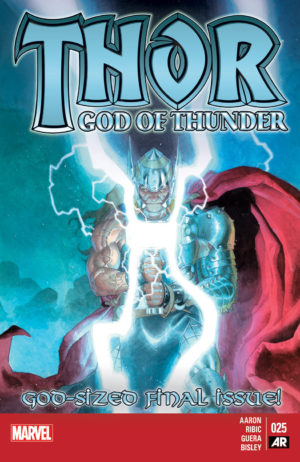
Thor: God of Thunder by Jason Aaron (30 to 43 projected issues)
Collects Thor: God of Thunder (2012) #1-25, Original Sin (2014) #5.1-5 (Thor & Loki: The Tenth Realm), and material from Original Sin (2014) #8 (and probably Thor (2014) #1-8 & Annual 1 and Thors (2015 #1-4)
What is it? One of the best Marvel Comics runs of all time is still unfolding before our eyes, with epic art to match a story that spans space and time.
Read it now: Guide to Thor
I don’t think there’s any way to possibly over-hype the first mega-arc of this Jason Aaron run. Aaron’s skill for layered plots has never been better as he coordinates one story across three different Thors separated by millennium. Every panel of Esad Ribic’s art looks like the painted cover of an epic fantasy novel.
Yet, the hype isn’t just about that first arc. Aaron seems to grasp how to push Thor into new realms of storytelling in a non-reductive fashion better than he has with any other hero at Marvel, and that’s saying a lot considering the popularity of his runs on Ghost Rider and Wolverine.
Marvel is likely biding their time in soliciting the run in oversize format until the end is in sight, and it could be that reaching the end might make a break point more obvious than it is now. At the moment, Secret Wars seems like the right spot, but if Mighty Thor extends for more than another 10 issues (and it just might) and possibly terminates in some sort of epic event (and it just might) we could be looking at three volumes rather than two.
That could explain Marvel’s caution in getting this one out – they skipped the perfect opportunity with the release of Thor: Ragnarok.
![]()
Thunderbolts (2013)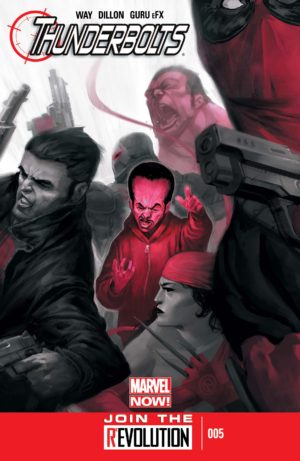
Thunderbolts by Way, Soule, Acker & Blacker
Thunderbolts (2013) #1-32 & Annual 1 (and maybe Deadpool (2013) Annual 1)
What is it? An all-new, all-different Thunderbolts focused on Marvel’s popular line-up of anti-heroes – including Punisher, Deadpool, Elektra, and a very different Venom than you’re used to.
Read it now: Guide to Thunderbolts
Getting this series is omnibus would be all about those sweet, sweet media tie-in dollars.
As an ongoing story, it’s just okay – Red Hulk ordering around this team of killers has some fun points, but never quite clicks the way the concept ought to.
However, in terms of sheer salability of a cast, this is one of the scant few Deadpool runs that Marvel hasn’t yet reprinted in omnibus format, and at the point we’re getting a “Deadpool Beginnings” omnibus I’d say anything with him is fair game.
It also stars Punisher, Elektra, and the Flash Thompson take on Venom – all major media stars in their own right. Given major exposure upcoming for each of those characters, a run of them all together in a single vigilante team-up would probably move units to casual fans even if it isn’t the strongest of all possible reads.
![]()
Venom (2011)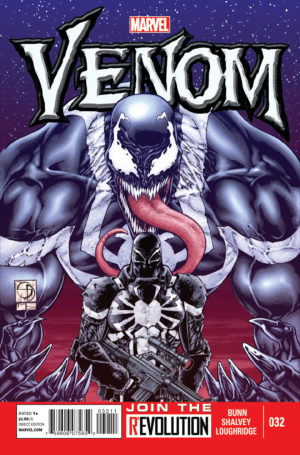
Venom by Remender & Bunn (52 projected issues)
Collects Venom (2011) #1-42, 27.1, & 13.1-4, Venom/Deadpool: What If? (2011) #1, Minimum Carnage: Alpha (2012) One-Shot, Minimum Carnage: Omega (2013) #1, and Scarlet Spider (2012) #10-11
What is it? The black suit symbiote gets friendly with an all-new host and the results are unlike any Venom you’ve read before – a hero who needs the suit as much as it needs him.
Emerging from the 2011 Spider-Island event, Rick Remender launched a very different Venom. This time, the symbiote was hosted by Flash Thompson, Peter Parker’s eternal plain-clothes nemesis.
A former high school sports star and soldier, Thompson lost his legs during his tour of duty and was at his lowest point in life before the government offered him a way to walk again – he could don their symbiote super suit and go on special missions, with the alien filling out his lower limbs.
The concept was a little bit superhero, a little bit Punisher-style vigilante, and a touch of body horror, which was full of new angles never previously explored by a Venom comic. The title made the jump to Marvel Now with Rick Remender handing the reigns to Cullen Bunn.
While Bunn’s run didn’t exactly catch on fire, he kept up the mission statement of not repeating past story beats by transferring Venom to (a beautifully rendered) Philadelphia and burdening him with an unwilling sidekick.
With many of the trades of this run getting harder to find and a Venom movie in the works, this would be a perfect modern omnibus to accompany a book of classic 90s Venom stories.

Great suggestions but don’t forget about Spider-Woman by Hopeless! Favorite Marvel comic of the past 5 years
Ah, indeed! I had forgotten that one had wrapped up. Honestly, I can’t really forgive it for the pregnancy plot, so it wouldn’t be in my Top 20.